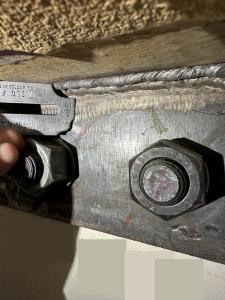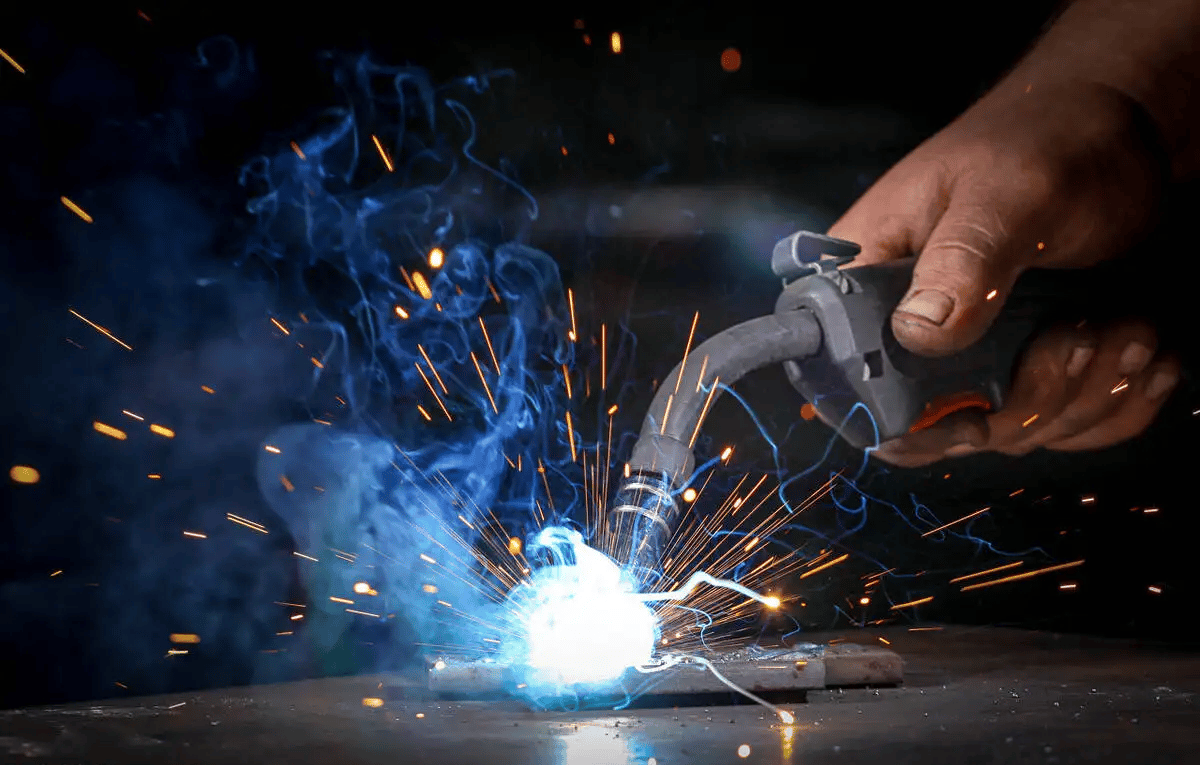Ingenious Techniques to Fillet Weld Examination and Screening: Enhancing Weld Top Quality and Conformity Requirements
In the world of welding, the quality and honesty of fillet welds play an important role in making certain the architectural stability and integrity of different industrial parts. With the consistent drive for enhanced performance and compliance with stringent requirements, the exploration of ingenious approaches to fillet weld assessment and testing has actually become critical.
Advanced Non-Destructive Testing Approaches
Using modern innovations, progressed non-destructive testing techniques play a crucial function in ensuring the integrity and quality of fillet welds. These techniques, such as phased variety ultrasonic testing (PAUT) and magnetic bit screening (MPT), deal in-depth insights right into the weld's interior structure without causing any kind of damages to the product. PAUT, for circumstances, makes use of numerous ultrasonic components to inspect the weld from various angles, offering a thorough visualization of potential flaws like absence of blend or fractures.
Similarly, MPT is effective in spotting surface-breaking problems by applying an electromagnetic field and iron particles to the weld area. This method is especially beneficial for recognizing interruptions that might endanger the weld's toughness. By employing these advanced non-destructive testing techniques, weld examiners can precisely examine the high quality of fillet welds, making certain conformity with sector criteria and regulations. The ability to spot defects early not only improves weld high quality however likewise prevents expensive rework or failures in structural integrity, highlighting the significance of these innovative testing approaches in welding inspections.
Robotics and Automation in Inspection
The assimilation of robotics and automation has revolutionized the examination process for fillet welds, enhancing performance and accuracy in top quality evaluation. Robotics offer exact control and repeatability in examining welds, making certain reliable and constant outcomes. Automated systems can be configured to follow certain evaluation courses, ensuring thorough protection of welds and lowering the danger of human mistake.
Robotic examination systems geared up with innovative sensors can identify and determine weld features with high accuracy, providing in-depth data for evaluation. These systems can identify flaws such as splits, lack of combination, and porosity, making it possible for prompt restorative activities to be taken. Additionally, robotics and automation permit real-time information collection and evaluation, providing immediate comments to drivers and assisting in fast decision-making processes.
Additionally, using robotics and automation in fillet weld evaluation improves overall performance by decreasing assessment times and increasing examination throughput. By improving the examination procedure, suppliers can make certain weld high quality and compliance requirements are satisfied successfully, ultimately resulting in cost financial savings and enhanced item quality.
Utilizing Expert System for Analysis
Synthetic intelligence plays a critical function in boosting the effectiveness and accuracy of analysis in fillet weld evaluation processes. By harnessing the power of AI, examiners can simplify the evaluation of weld high quality and compliance standards, leading to more precise and dependable outcomes. AI formulas can quickly process vast quantities of information from weld evaluations, spotting defects or inconsistencies that might be challenging to understand the nude eye. This innovative innovation enables real-time surveillance of weld high quality, allowing for prompt rehabilitative actions to be taken if any kind of problems are spotted.
Furthermore, AI systems can gain from previous evaluation information, constantly enhancing their capacity to identify prospective defects and discrepancies in fillet welds. This flexible knowing capacity enhances the overall quality assurance procedure, lowering the likelihood of human error and making sure that welds fulfill the called for standards. By integrating expert system right into fillet weld evaluation, sectors can attain greater levels of efficiency, consistency, and compliance in their evaluation methods.
Portable Equipment for On-Site Assessment
 Enhancing field evaluation effectiveness, the fostering of mobile devices changes on-site assessment processes for fillet welds. These tools provide versatility and comfort, permitting assessors to perform thorough examinations in different places, including difficult or remote atmospheres. Portable tools such as ultrasonic testing gadgets, magnetic bit assessment tools, and electronic radiography systems give real-time information and high-resolution imaging abilities, allowing quick decision-making and prompt comments on weld top quality.
Enhancing field evaluation effectiveness, the fostering of mobile devices changes on-site assessment processes for fillet welds. These tools provide versatility and comfort, permitting assessors to perform thorough examinations in different places, including difficult or remote atmospheres. Portable tools such as ultrasonic testing gadgets, magnetic bit assessment tools, and electronic radiography systems give real-time information and high-resolution imaging abilities, allowing quick decision-making and prompt comments on weld top quality.One significant benefit of mobile tools is their ability to simplify inspection treatments, lowering downtime and look what i found improving general performance. Inspectors can quickly move these devices to different job sites, eliminating the requirement for transferring heavy machinery or parts to off-site facilities. Furthermore, the mobility of these tools promotes cost-effectiveness by reducing transport expenditures and increasing inspection timelines.
In addition, using mobile tools for on-site inspection promotes proactive quality assurance steps, as assessors can quickly determine and attend to any kind of potential welding issues or disparities. By integrating these ingenious innovations right into on-site inspection techniques, welding professionals can make certain compliance with sector standards and boost weld quality, inevitably leading to enhanced architectural stability and safety and security in different welding applications.
Integration of Data Administration Equipment
Having enhanced on-site inspection processes via the utilization of portable devices, the following phase includes the smooth assimilation of data administration systems to better enhance effectiveness and information evaluation capabilities in fillet weld evaluation and screening. Welding Inspection Racine. By incorporating information management systems into the assessment procedure, companies can streamline data collection, storage, and analysis. This combination permits real-time surveillance of weld quality, immediate identification of flaws, and punctual decision-making to fix any issues that may occur during the assessment procedure
Information monitoring systems play an essential function in streamlining assessment information, promoting very easy accessibility for accredited employees, and ensuring information honesty and security. Through the integration of these systems, inspectors can generate comprehensive records, track historic information for pattern analysis, and improve overall procedure performance. In addition, the assimilation of information administration systems allows seamless communication between various stakeholders entailed in the assessment process, promoting collaboration and enhancing total top quality control procedures. Ultimately, the assimilation of information management systems serves to elevate the requirements of fillet weld assessment and screening, ensuring conformity with sector guidelines and enhancing weld top quality.
Conclusion
In final thought, ingenious techniques to fillet weld examination and screening have actually substantially boosted weld high quality and compliance criteria. Advanced non-destructive screening approaches, robotics, automation, synthetic knowledge, mobile devices, and data administration systems have actually changed the way weld assessments are performed. By making use of these technologies, markets can make sure that welds fulfill the called for quality standards and policies, eventually enhancing general performance and safety and security in welding procedures.

By employing these advanced non-destructive screening image source strategies, weld assessors can properly analyze the top quality of fillet welds, making certain conformity with sector criteria and laws. Mobile devices such as ultrasonic testing gadgets, magnetic bit assessment devices, and digital radiography systems provide real-time data and high-resolution imaging abilities, enabling fast decision-making and prompt comments on weld high quality.
Having maximized on-site examination procedures with the usage of portable devices, the following phase involves the smooth combination of data management systems to better boost effectiveness and data evaluation abilities directory in fillet weld inspection and screening (Welding Inspection Racine). Eventually, the integration of information administration systems serves to boost the requirements of fillet weld evaluation and screening, making sure compliance with sector policies and enhancing weld high quality
 In final thought, innovative strategies to fillet weld assessment and testing have actually substantially improved weld quality and conformity standards.
In final thought, innovative strategies to fillet weld assessment and testing have actually substantially improved weld quality and conformity standards.